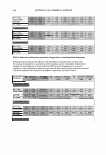422 JOURNAL OF COSMETIC SCIENCE homogenizer (Ml I0F, Microfluidics, USA). Finally 3-dimension is completion through lamellar phase self-organization that combines SLN-retinol with skin lipid matrix (SLM). We used laser light scattering system (Zetasizer 3000H, Malvern, UK), cyro-SEM, chromameter (Color JS 555, Color techno system, Japan), HPLC( model510, Waters, USA) and image analyzer to analyze our 3-dimentional systems. Conclusions The skin adsorption and bio-availability can be improved by the general liposome, which is composed of phospholipid etc. But the general liposome is relatively unstable. In order to better this unstability, we used 3-dimensional system that doubly capsulated retinol. That formed multi lamellar structure, after formation of primary liposome. According to chromameter date, the color stability of 3-dimensional retinol is enhanced by 5~ I 0 times compared with general liposome systems. We also confirmed through HPLC analysis that 3- dimensional retinol is more long lasting. The effect of skin penetration and wrinkle reduction are improved, too. References [l] CM. L ee, AC. Boileau et al, Review of Animal Models in Carotenoid Research, J. Nutr., 129, 2271-2277, 1999. [2] Willhite, C.C. , Structure-activity relationships of retinoids in developmental toxicology. II. Influence of the polyene chain of the vitamin A molecule. Toxicol. Appl. Pharmaco/., 83, 563-575, 1986. [3] H Oikarinen, A I. Oikarinen et al, Modulation of procol/agen Gene Expression by Retinoids. J. C/in. lnves,t 15, 1545~1553, 1985. [4] H.B. Sauberlich, Bioavailability of vitamins. Prag. Food Nutr. Sci., 9, 1-33, 1985. [5] C. J. Kirby, Controlled delivery of functional food ingredients: Opportunities for /iposomes in the food industry in Liposome Technology II, Gregoriadis, G (Eds.) CRC Press, Boca Raton, 215-232, 1984 [6] H. H Kim, I. C Baianu., Novel liposome microencapsu/ation techniques for food applications. Trends Food Sci. Technol., 2, 55-61, 1991. [7] AM. Young and G Gregoriadis, Photolysis of retinal in Liposomes and its protection with Tocopherol and Oxybenone, Photochem & Photobiol., 63, 344~352, 1996
Purchased for the exclusive use of nofirst nolast (unknown) From: SCC Media Library & Resource Center (library.scconline.org)





































































































